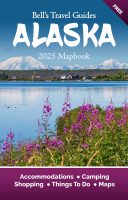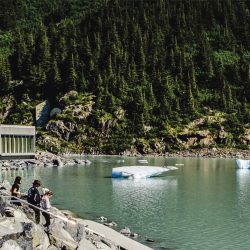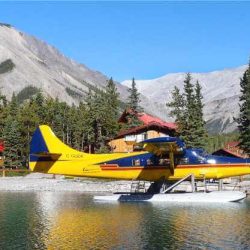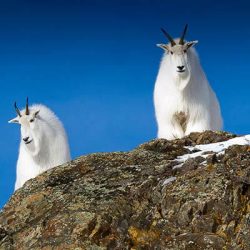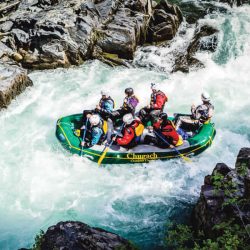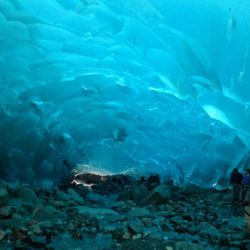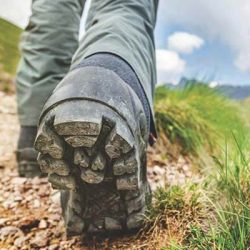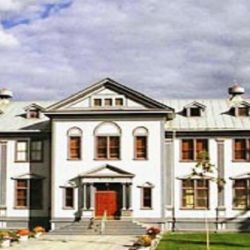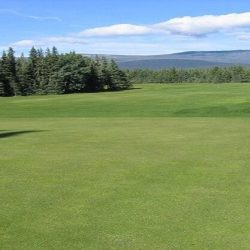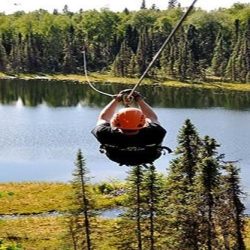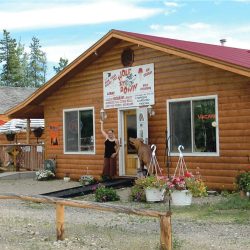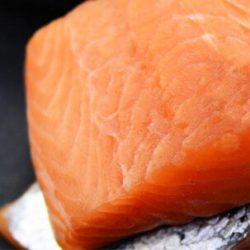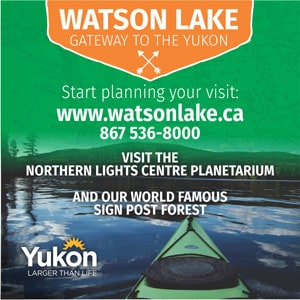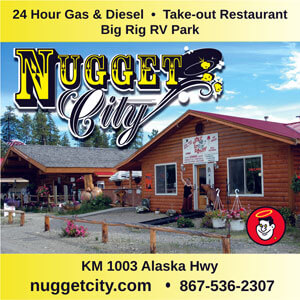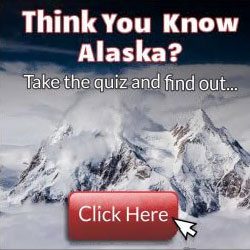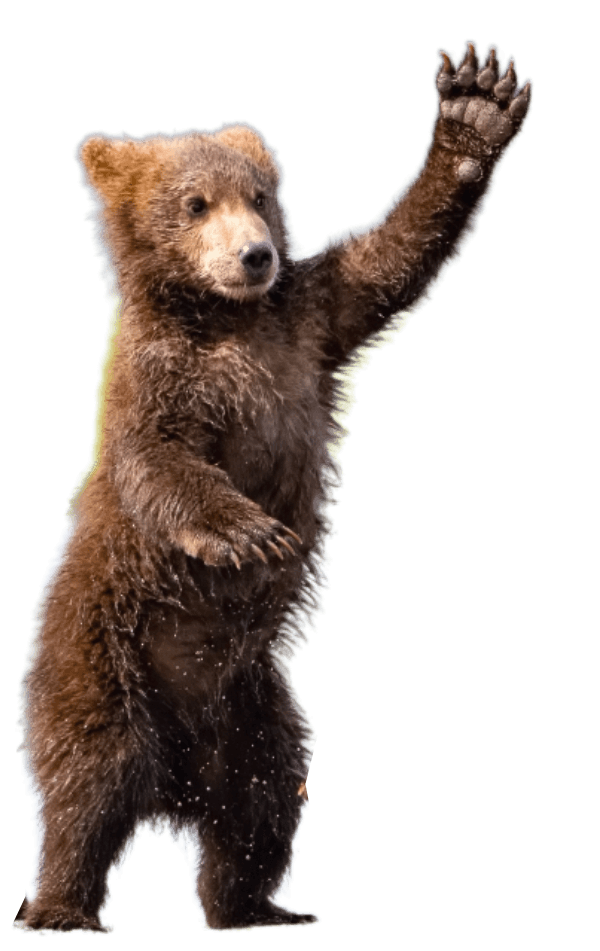Kluane protects approximately 8,500 square miles (22,000 square km) in the southwestern corner of the Yukon. It is home to seventeen of the Canada’s tallest mountains, including Mt. Logan (19,545 ft/5959 m), the country’s highest peak. Over half of the land mass is permanently covered in snow and ice. The remaining areas of forests and tundra are populated by eagles, grizzlies, Dall’s sheep, and other species often at risk elsewhere. Since 1980, Kluane National Park and Reserve is part of the Kluane/Wrangell-St. Elias/Glacier Bay/Tatshenshini-Alsek UNESCO World Heritage Site, one of the world’s largest non-polar ice fields.
There are many ways to experience the park. Book a flightseeing tour to get up close to Kluane’s magnificent icefields and glaciers or set off to discover the amazing landscapes Kluane has to offer by foot. Stop at the Da Kų Culture Centre in Haines Junction or at the Thechàl Dhâl’ Visitor Centre to get up-to-date park information. These interpretive facilities honour the rich Southern Tutchone heritage and culture. The easiest access point for many highway travelers will be at Kathleen Lake on the Haines Highway.
Kathleen Lake (Mät’àtäna Män), 25 km south of Haines Junction on the Haines Highway is a natural wonder. The crystal clear waters are backed by incredible views of the Kluane Range. This area offers exceptional hiking, boating and camping.
Visit Parks Canada for more information.
Camping in Kluane National Park
Kathleen Lake has a 38-site campground that can accommodate tents, vans/pick-ups, tent trailers as well as trailers and motorhomes up to 30 ft. There is potable drinking water, firewood, bear-proof storage lockers and outhouses. Campfires are allowed in established rings at each campsite.
The campsites at Kathleen Lake can accommodate tents, vans/pick-ups, tent trailers as well as trailers and motorhomes up to 30 ft. Although some sites may be able to accommodate a larger motorhome or trailer, there are no pull-through sites, and many sites have hills or tuns in the driveways. Sites 3, 7 and 13 are better suited for big equipment as they have long, flat driveways. All campsites are unserviced.
King’s Throne Trail
Near Kathleen Lake is the challenging 5-kilometre King’s Throne Trail. Hikers will enjoy alpine flowers and great views along this trail. The upper portion of the trail that reaches the peak of the mountain is unmarked and unmaintained.
